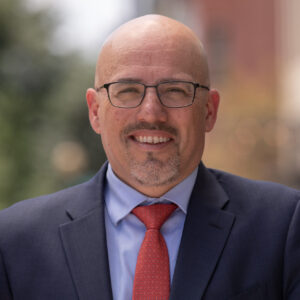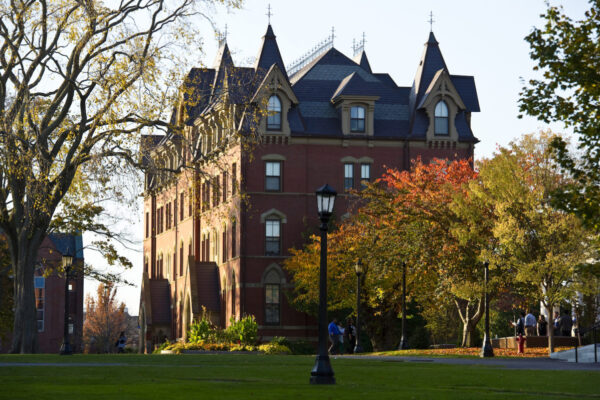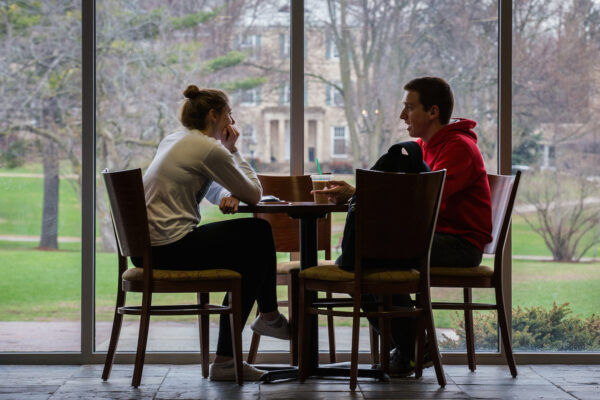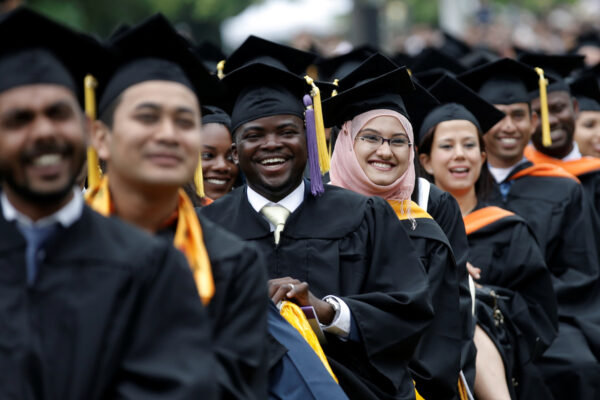“Historically, pandemics have forced humans to break with the past and imagine their world anew. This one is no different. It is a portal, a gateway between one world and the next.”
—Arundhati Roy
Financial Times, April 3, 2020
In the early months of COVID-19, novelist Arundhati Roy suggested that the trauma and tragedy of the pandemic could be the gateway to a new world. Of course, traversing gateways is always fraught with anxiety, stress, and fear, and requires a curious mind open to both forgetting old ways and learning new ones. Such learning can occur across many life roles—worker, family member, citizen, and student. In fact, education, work, and caregiving, sometimes aligning and other times at odds, came crashing together during the pandemic—and we are still clarifying what and how we learned so we can walk through the gateway to a new world.
For the 72 million Americans in the labor force who lack a postsecondary credential, learning at the intersection of education, work, and life responsibilities holds the key to a high-wage job in the global knowledge and technology economy. Such learning requires a holistic perspective on learning as it manifests and transfers across life contexts and demands that colleges and universities implement curricula that deeply integrate work and learning.
Fortunately, a promising set of existing models—work colleges, learn and earn programs, apprenticeships, paid internships, and co-ops—can help us learn how to better serve working learners. Work colleges are federally designated four-year institutions that blend learning, work, and service for traditional residential students. How this model might serve working learners who need to combine education and work is the topic of a recent report, Exploring the Work College Model for Working Learners, co-published by the American Council on Education and the Corporation for a Skilled Workforce. With case studies of two work colleges, Berea College and Paul Quinn College, the report looks at the strengths, challenges, and design parameters that colleges and universities can use as a guide as they consider how to innovate their own pedagogy and curricula to better support working learners.
Through data analyses and structured interviews, the authors identified key strengths in the work college approach, including affordability, program efficiency, and learning outcomes. Work colleges enhance affordability by leveraging the work stipend with more traditional forms of aid such as grants and, in some cases, endowment resources. The concept of work as deeply ingrained in the college experience has multiple benefits. Operationally, it eases the logistics and increases the efficiency of coordinating work and study. Regarding learning outcomes, deeply integrating work in the college experience teaches valuable workplace skills in ways that transfer more readily to employment settings, reframes faculty mentoring in a way that improves academic and career navigation, and builds the essential understanding that work and structured learning are now lifelong and intermixed activities. This understanding serves graduates as they enter the labor market.
Berea, among the oldest work colleges, has been experimenting with these strategies since 1996 to serve working learners, with a particular focus on student parents to extend its mission across generations through its Non-Traditional Student Program.
Berea’s experience—and an analysis of other experiments with the work college model—illuminates three areas of challenges to consider when innovating to support working learners: the work stage of learners, the depth of work/academic integration, and the level of work intensity. The current model is an early career development approach more appropriate for younger students with less experience than working learners. The analysis also indicated broad variability in how deeply work and academics are integrated. For working learners, this deep integration is critical. Finally, maintaining a consistent work experience and compensation is a challenge for traditional learners in the model. For working learners who are managing family financial responsibilities, addressing this challenge in innovative ways is paramount.
One of the newer work colleges, Paul Quinn College, is addressing these challenges through a new approach to employer partnerships. The Corporate Work Program uses a model of paid work/learning experiences outside the college that are integrated with the academic curricula.
As higher education institutions consider adapting work college approaches, four main issues are important to consider:
- In the work college model, work or labor supervisors are teachers and mentors, not just bosses; these supervisors need training and support for both roles.
- College faculty and staff must be culturally aware and responsive when exploring and designing work programs. Colleges must acknowledge and honor the historical experience different types of students (e.g., Black and Brown students with historical generational experiences of enslavement and indentured servitude) have had with work, and they should design programs appropriately.
- A work or labor program requires substantial staffing and financial systems infrastructure.
- A work or labor program also requires a data system to measure and track nonacademic learning in the work program.
As society continues its journey out of the pandemic, we will continue to see changes in the organization of work, the structure of the family, and the evolution of communities and regional economies. Colleges and universities increasingly will be called on to meet the needs of working learners and to integrate learning across work and education settings. The experiences of work colleges can help many higher education stakeholders begin the journey of innovation that will help them create new value propositions for a new world.
If you have any questions or comments about this blog post, please contact us.




